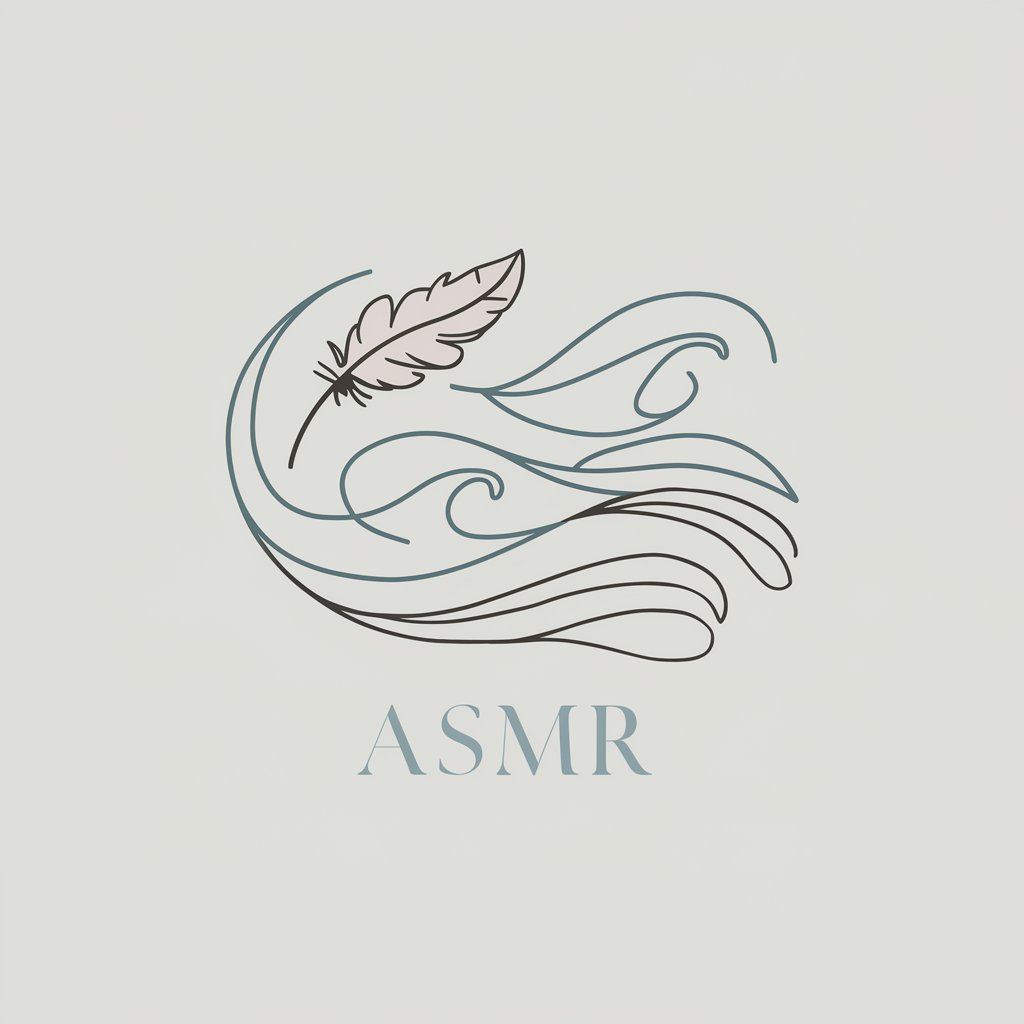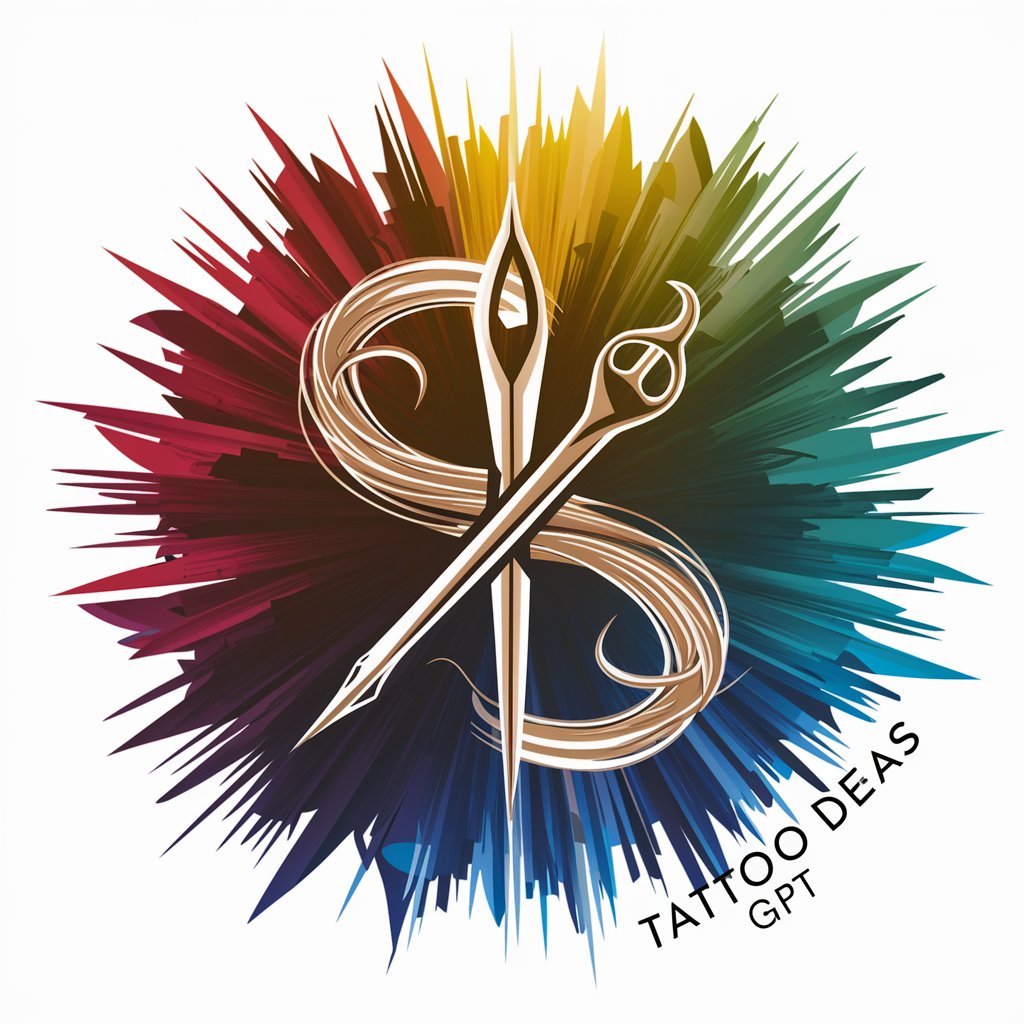ASMR - ASMR Experience Guide

Hello, let's explore the soothing world of ASMR together.
Soothing Sounds for Mindful Relaxation
What are some common ASMR triggers that help people relax?
Can you describe how different ASMR sounds affect the mind?
How can someone discover their favorite ASMR triggers?
What are the benefits of incorporating ASMR into a daily routine?
Get Embed Code
Understanding ASMR: Essence and Purpose
ASMR, which stands for Autonomous Sensory Meridian Response, refers to a unique, calming sensation that many individuals experience in response to specific auditory or visual stimuli. These stimuli, often referred to as 'triggers,' can include whispers, soft tapping, rustling paper, or gentle hand movements. The essence of ASMR lies in its ability to induce a deeply relaxing state, characterized by tingles that typically start on the scalp and can move down the back of the neck and spine. This soothing phenomenon is not just a fleeting sensation; it's designed to help reduce stress, improve sleep quality, and enhance overall mental well-being. An illustrative example of ASMR's purpose is seen in scenarios where individuals seek out ASMR videos or audio recordings before bedtime. By listening to the gentle whispering of a voice or the delicate sound of brush strokes, listeners can drift into a state of profound relaxation, easing the transition into sleep. Powered by ChatGPT-4o。

Core Functions of ASMR and Their Applications
Stress Reduction
Example
Listening to ASMR triggers such as whispering or soft tapping
Scenario
After a long day, a person might play an ASMR video featuring soft, soothing whispers. The delicate sounds help dissolve the day's stress, enveloping the listener in a cocoon of calmness, thus aiding in relaxation and stress relief.
Sleep Aid
Example
Engaging with ASMR recordings designed to induce sleep
Scenario
An individual struggling with insomnia selects a nighttime ASMR routine, including slow, deliberate sounds of fabric being gently stroked. The rhythmic, soft noises facilitate a quicker onset of deep sleep, demonstrating ASMR's effectiveness as a natural sleep aid.
Concentration and Study Aid
Example
Background ASMR sounds for enhancing focus
Scenario
A student listens to a recording of ambient ASMR sounds, like pages turning or rain falling, while studying. This background noise creates a tranquil study environment, improving concentration and making study sessions more productive.
Emotional Support
Example
Personal attention ASMR for companionship and comfort
Scenario
Feeling lonely, someone watches a personal attention ASMR video, where the artist simulates a caring interaction. This scenario mimics a sense of being cared for and listened to, offering emotional support and reducing feelings of isolation.
Who Benefits Most from ASMR Services?
Individuals with Anxiety or Stress
People experiencing high levels of stress or anxiety can find solace in ASMR's gentle, soothing triggers. The calming effect of ASMR can provide a much-needed escape, helping to lower anxiety levels and create a sense of peace.
Those Struggling with Sleep Disorders
Individuals suffering from insomnia or other sleep-related issues may benefit from ASMR as a natural sleep aid. The relaxing sounds and visuals can help quiet the mind and prepare the body for rest, leading to improved sleep quality.
Students and Professionals Seeking Focus
For those needing to improve concentration in study or work environments, ASMR can offer a unique form of noise masking. By providing a consistent, soothing background sound, ASMR can help enhance focus and productivity.
Anyone Seeking Emotional Comfort
People feeling isolated or in need of comfort may find personal attention ASMR videos particularly beneficial. These videos simulate caring interactions, offering a sense of companionship and emotional support.

Guidelines for Using ASMR
Begin with Exploration
Initiate your ASMR journey by visiting platforms offering free trials without the need for logins, such as yeschat.ai, to discover a wide range of ASMR content without any commitments.
Identify Your Triggers
Explore different types of ASMR triggers such as whispers, tapping, or nature sounds to find what most effectively induces your ASMR response. This personal exploration is crucial for a tailored experience.
Create a Comfortable Environment
Ensure your listening or viewing setting is quiet, comfortable, and free from interruptions. Use headphones for a more immersive experience, capturing the binaural effects of ASMR recordings.
Schedule Regular Sessions
Integrate ASMR sessions into your daily routine, especially during times of stress or before sleep, to maximize relaxation and mental well-being benefits.
Reflect and Adjust
After each session, reflect on your experience. Adjust the type of content, volume, and environment as needed to enhance your ASMR experience over time.
Try other advanced and practical GPTs
IELTS Writing Exam Assistant
AI-powered IELTS Writing Enhancement

Proofreading Owl
Elevate Your Writing with AI

Alt Text Assistant (by RushTechHub)
Enhancing Accessibility with AI-Powered ALT Text

Complete Proofreading in One Click
Elevate Your Writing with AI-Powered Proofreading

Collaborative Writing
Empower Your Stories with AI

Price
Empowering informed pricing decisions with AI

Midjourney Muse
Inspiring Artistic Journeys with AI

Artful Prompter
Bringing Your Vision to Life with AI

Coloring Page Creator
AI-powered Personalized Coloring Designs

Tattoo Ideas
Inspiring Your Next Ink with AI Creativity

CRICUT COMPANION
Elevate Your Crafting with AI

P
Unlocking the Potential of 'P' with AI

Frequently Asked Questions About ASMR
What is ASMR?
ASMR stands for Autonomous Sensory Meridian Response, a soothing sensation that often begins on the scalp and moves down the body. It's often triggered by specific auditory or visual stimuli, leading to feelings of relaxation and well-being.
Can ASMR help with sleep?
Yes, many find that ASMR can significantly improve their ability to fall asleep. The gentle, soothing sounds can help calm the mind, making it easier to drift off to sleep.
Are there different types of ASMR triggers?
Absolutely, ASMR triggers are highly individual but can be broadly categorized into sounds like whispering, tapping, and nature sounds; visual stimuli like deliberate hand movements; and tactile sensations.
How do I know if I experience ASMR?
If you feel a tingling sensation on your scalp or down your spine in response to certain sounds or sights, and these feelings are accompanied by a state of relaxation, you're likely experiencing ASMR.
Can ASMR be used for meditation?
Yes, ASMR can be a form of mindfulness practice, helping listeners focus on the moment and the sensory experience, thus aiding in relaxation and meditation.
